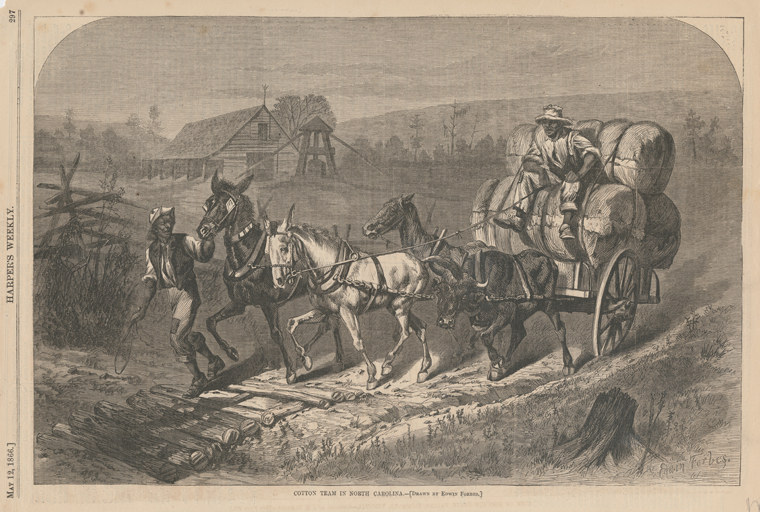Close to the Land: North Carolina 1820-1870
By Elizabeth A. Fenn, Peter H. Wood, Harry L. Watson, Thomas H. Clayton, Sydney Nathans, Thomas C. Parramore, and Jean B. Anderson; Maps by Mark Anderson Moore. Edited by Joe A. Mobley. From The Way We Lived in North Carolina, 2003. Published by the North Carolina Office of Research and History in association with the University of North Carolina Press. Republished in NCpedia by permission. Revised December 2022 by Digital Heritage Library.
See also: The Way We Lived in North Carolina: Introduction; Part I: Natives and Newcomers, North Carolina before 1770; Part II: An Independent People, North Carolina, 1770-1820; Part III: Close to the Land, North Carolina, 1820-1870; Part IV: The Quest for Progress, North Carolina 1870-1920; Part V: Express Lanes and Country Roads, North Carolina 1920-2001
 Part III: North Carolina in the 19th Century
Part III: North Carolina in the 19th Century
North Carolinians of the nineteenth century dwelt in an agrarian world. This series of articles, Close to the Land, details the lives of antebellum Carolinians from the tobacco field to the grist mill, the courthouse to the schoolyard, and the camp-meeting arbor to the enslaved peoples' quarters.
The farm, whether of ten acres or ten thousand, was the basic unit of economic production and social organization in antebellum North Carolina. The Tar Heel town, whether port city or backcountry village, was intrinsically tied to agriculture. Even budding industry and improved transporation facilities were essentially the outgrowth of efforts to process agricultural products and to reach markets efficiently. Although war and industrial expansion were to revolutionize society and transform the economy, the state's continued committment to agriculture linked North Carolina with its rural traditions.
Contents:
North Carolina in the Victorian Era 1820-1870
Rural Community: North Carolina 1820-1870
Town Life and Enterprise: North Carolina 1820-1870
Forces for Change: North Carolina 1820-1870
Keep reading - North Carolina in the Victorian Era 
More on the history of North Carolina in the 19th century from NCpedia:
Women in Antebellum North Carolina
Agriculture (multi-part article)
Cooking in the 1800s
Internal Improvements
Political Parties
Turnpikes
Fenn, Elizabeth Anne, and Joe A. Mobley. 2003. The way we lived in North Carolina. Chapel Hill, NC [u.a.]: Published in association with the Office of Archives and History, North Carolina Dept. of Cultural Resources, by the University of North Carolina Press.
Image Credits:
Forbes, Edwin, 1839-1895. Cotton team in North Carolina. 1866-05-12. Retrieved from the Digital Public Library of America, http://digitalcollections.nypl.org/items/775c4330-cd0d-012f-dc83-58d385a.... (Accessed March 28, 2019.)
26 March 2019 | Anderson, Jean B.